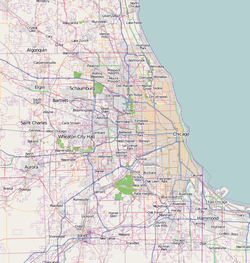Flamingo-on-the-Lake Apartments | |
 The front of the apartments | |
| Location | 5500-5520 S. Shore Drive, Chicago, Illinois |
|---|---|
| Coordinates | 41°47′41″N87°34′51″W / 41.79472°N 87.58083°W |
| Area | Hyde Park, Chicago |
| Built | 1927 |
| Architect | William C. Reichert |
| Architectural style | Beaux Arts, Classical Revival |
| NRHP reference No. | 86001194 [1] |
| Added to NRHP | May 14, 1986 |
The Flamingo-on-the-Lake Apartments, also known as the Flamingo Apartment Hotel, is a building designed by architect William C. Reichert and located at 5500-5520 S. Shore Drive along Lake Michigan in the Hyde Park neighborhood of Chicago, Illinois. The 16-story apartment building was built with 144 apartments and 16 hotel rooms in 1927; it also featured an outdoor pool and bathhouse. It was designed in the Classical Revival style; its exterior is red brick with terra cotta ornamentation and a dentillated cornice. [2] It and the adjacent building, The Promontory Apartments, a co-op building designed by Mies van der Rohe, are the furthest east buildings in Hyde Park.
The building was added to the National Register of Historic Places on May 14, 1986. [1]


